
HMI CONCEPT
PRODUCT DESIGN
UI/UX
3D/CGI ANIMATION
Ovea
WHAT IF?
The journey
What if the forward-looking design approaches in the automotive sector could also be radically transferred to other areas of transportation? What if a boat could be completely redesigned with a view to the electric and autonomous future of mobility? This is the approach taken by ovea.
Exploring new ways of interaction based on a maritime environment. A holistic design concept that pushes the boundaries and shows how digital possibilities can significantly change physical product experiences.
THE CONCEPT
This project does not claim to be a fully practice-compatible design or pursue the goal of a real market launch. Rather, it is about playfully confronting the mobility scenarios of the future, understanding Interfaces as a spatial component that merges completely with the product and its surroundings in terms of form and design.

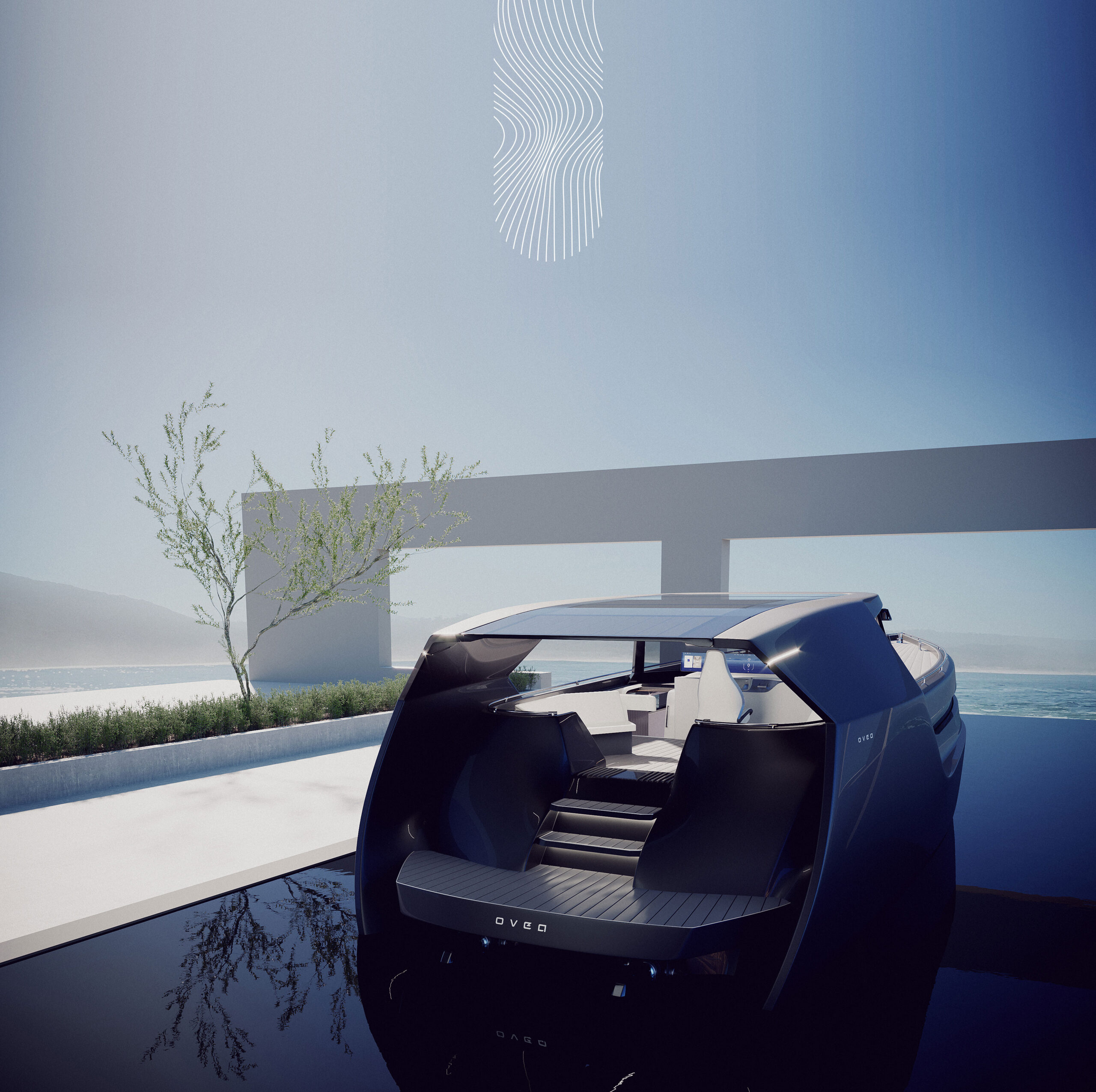
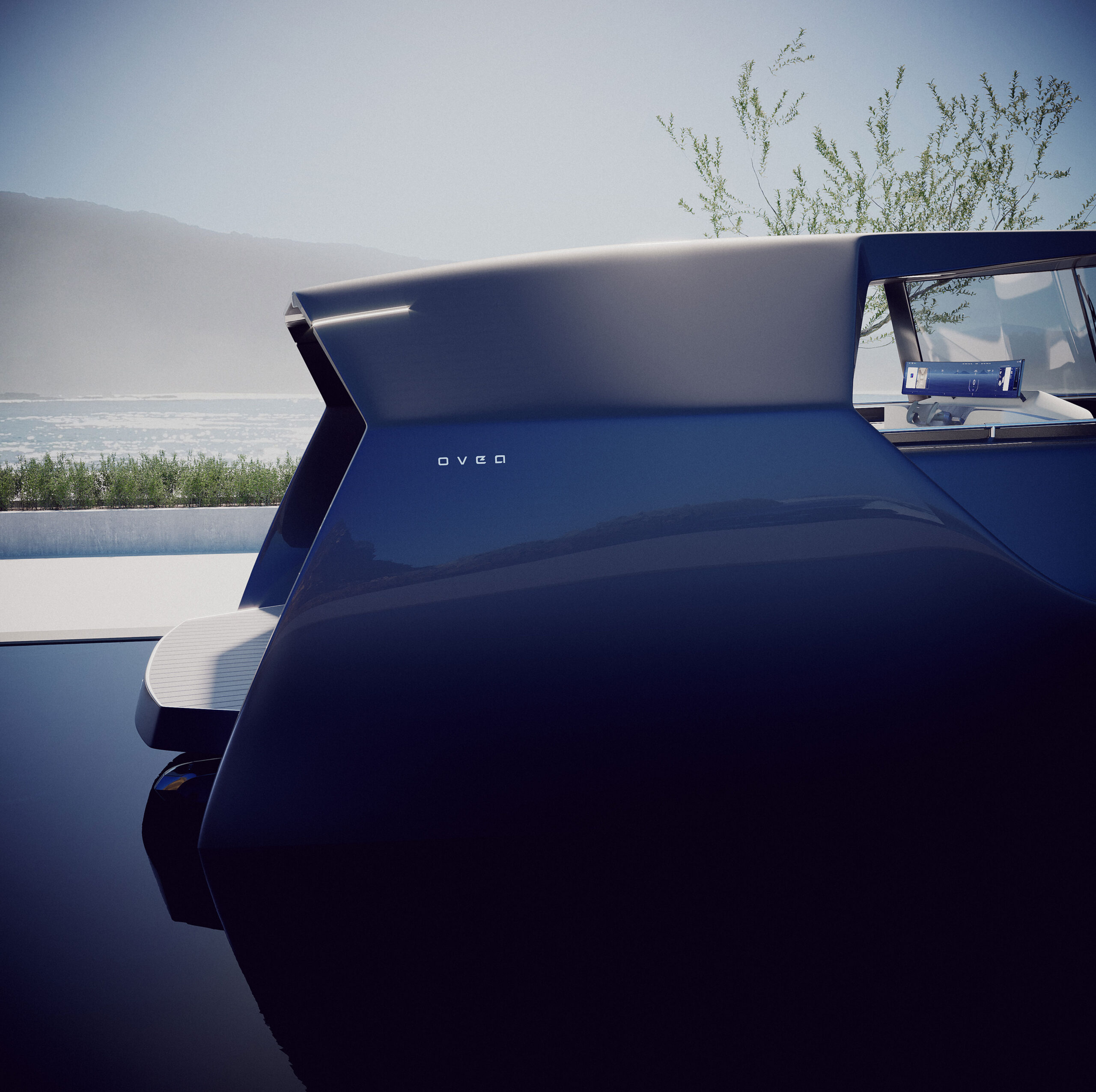
PRODUCT DESIGN
flowing lines
Designed from scratch and inspired by modern automotive concepts, the idea was to create a Tesla on water. Sharp edges and yet equally flowing lines and balanced proportions – wrapped in a dark anthracite-colored surface.
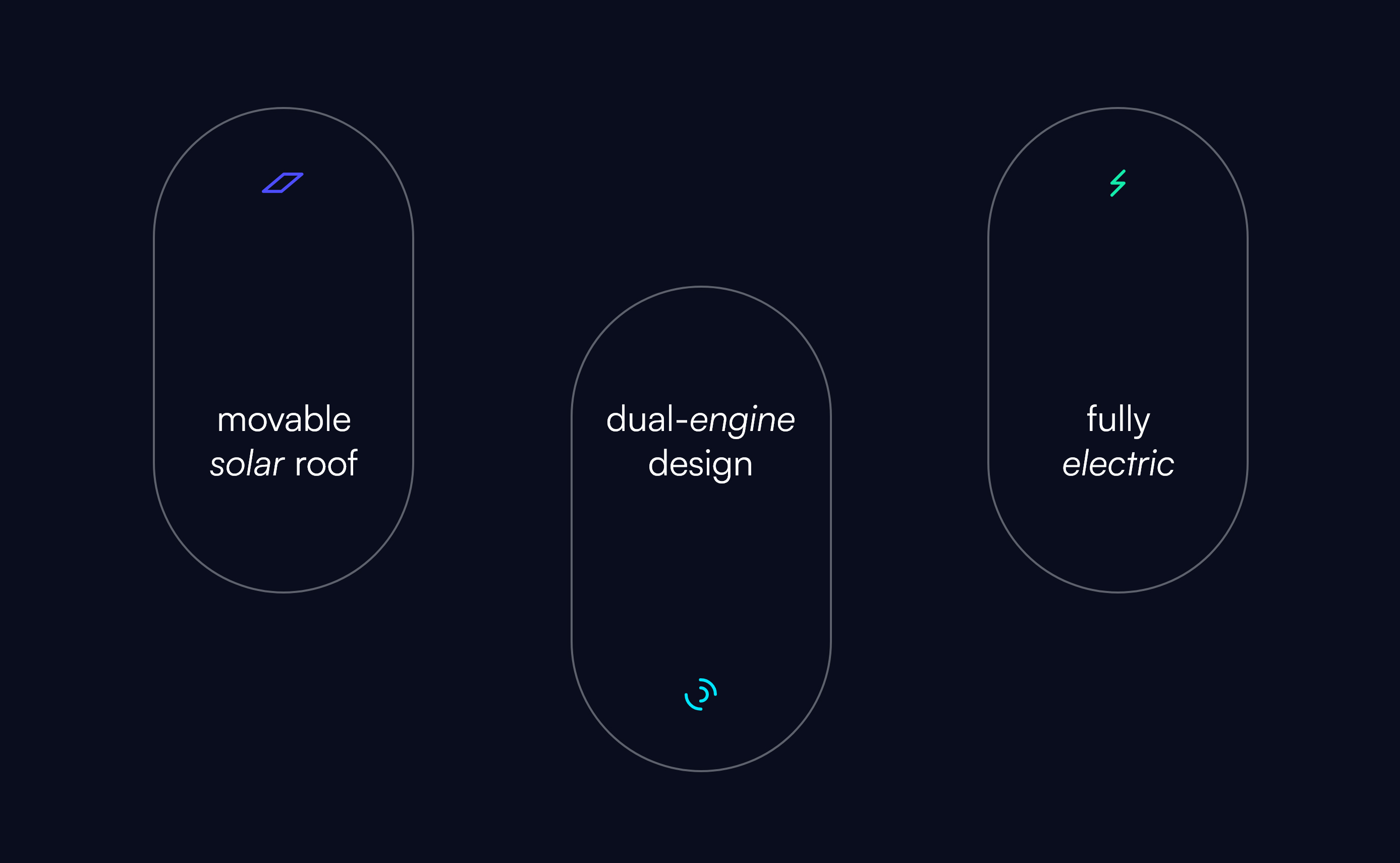
The design is characterized by an open upper deck with a seating area, a symmetrical, spacious interior layout with 2 entrances, a large living area, a further room with sleeping facilities and a modern bath room.
The centrally arranged cockpit offers a unique overview and is a novelty for boats. This allows you to take command and keep an overview with the large, drive-centered dashboard.
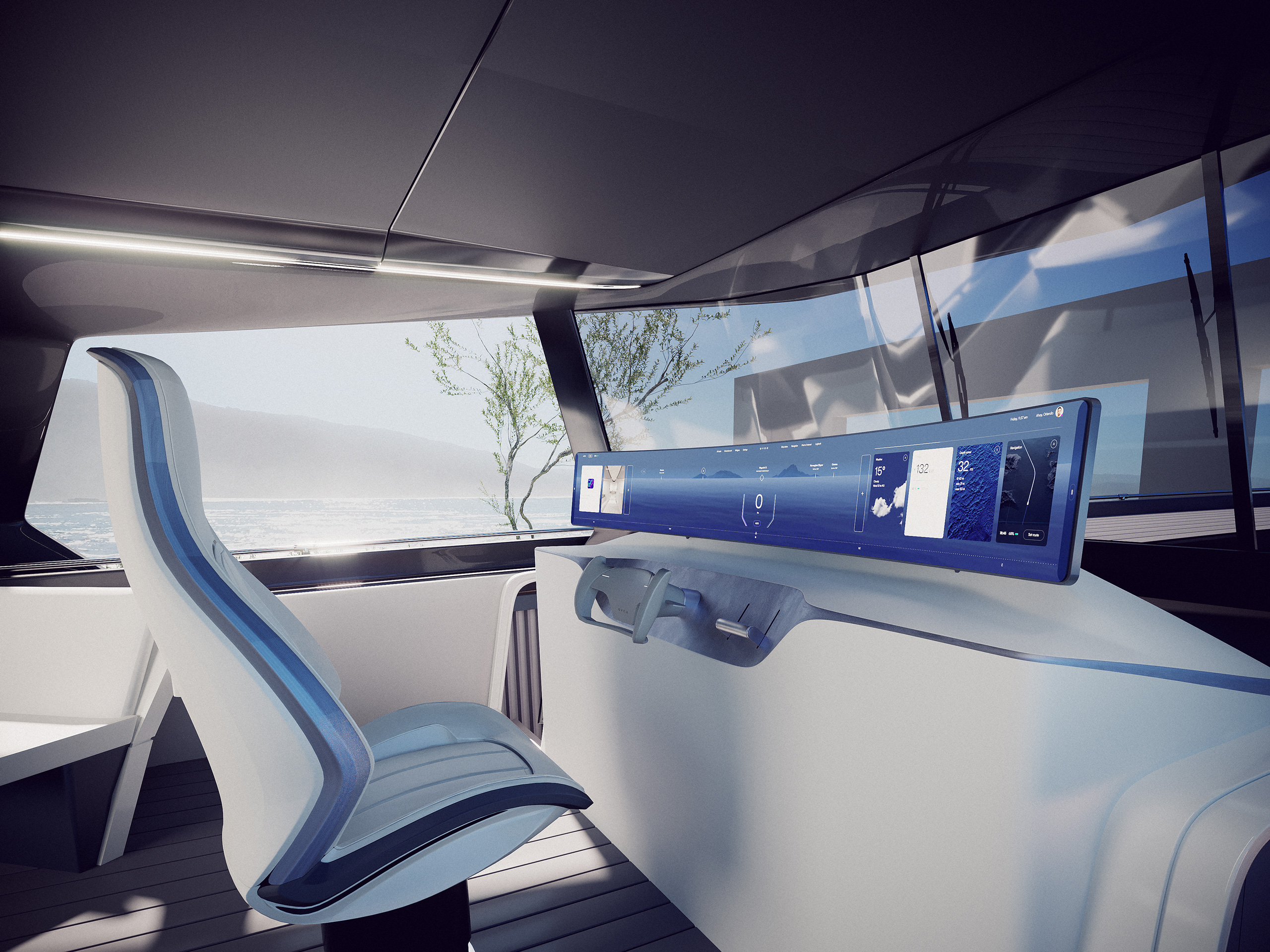
CGI
immersive boarding
Exterior and interior views are created entirely in 3D and help to illustrate the vision and bring it to life virtually.
EXPERIENCE DRIVEN
mixing realities
Exciting to see, how future interfaces change the way we interact and perceive information. This concept does not stop at the display level or in a single app. Augmented projections are used to create an immersive user experience that takes over the entire physical space.
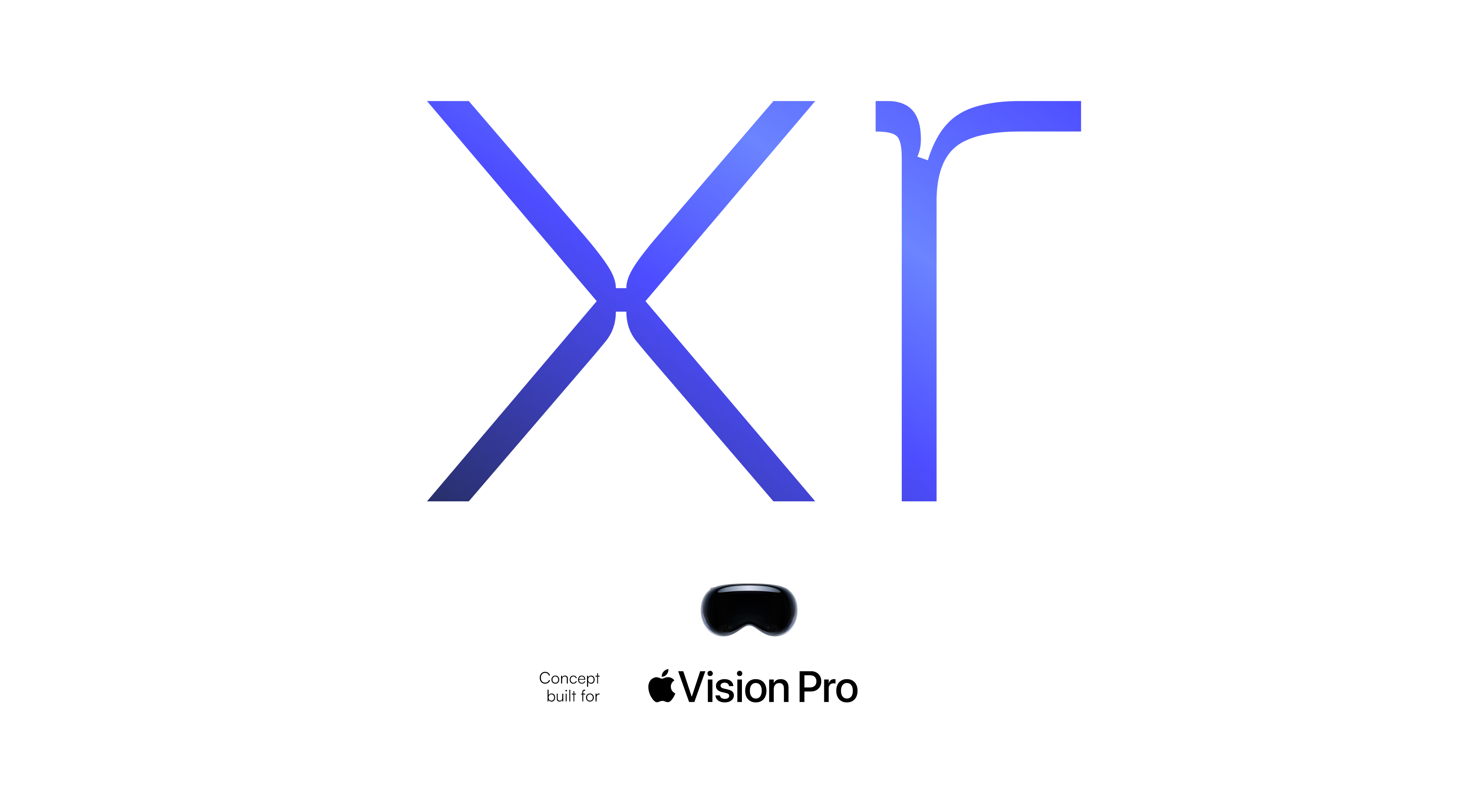
hybrid spatial UI
Even if all-encompassing mixed realities are still a dream of the future, there are already promising approaches to understanding this as the next digital revolution. Devices such as Apple's Vision Pro will make it possible to control and superimpose spatial variability anywhere and at any time.
The mixed reality manifesto describes how we will we interact with interfaces in the future. The clear distinction between usage and downtime, between device and environment, will disappear. Physical spaces and applications will merge together to create a new form of interactive space.
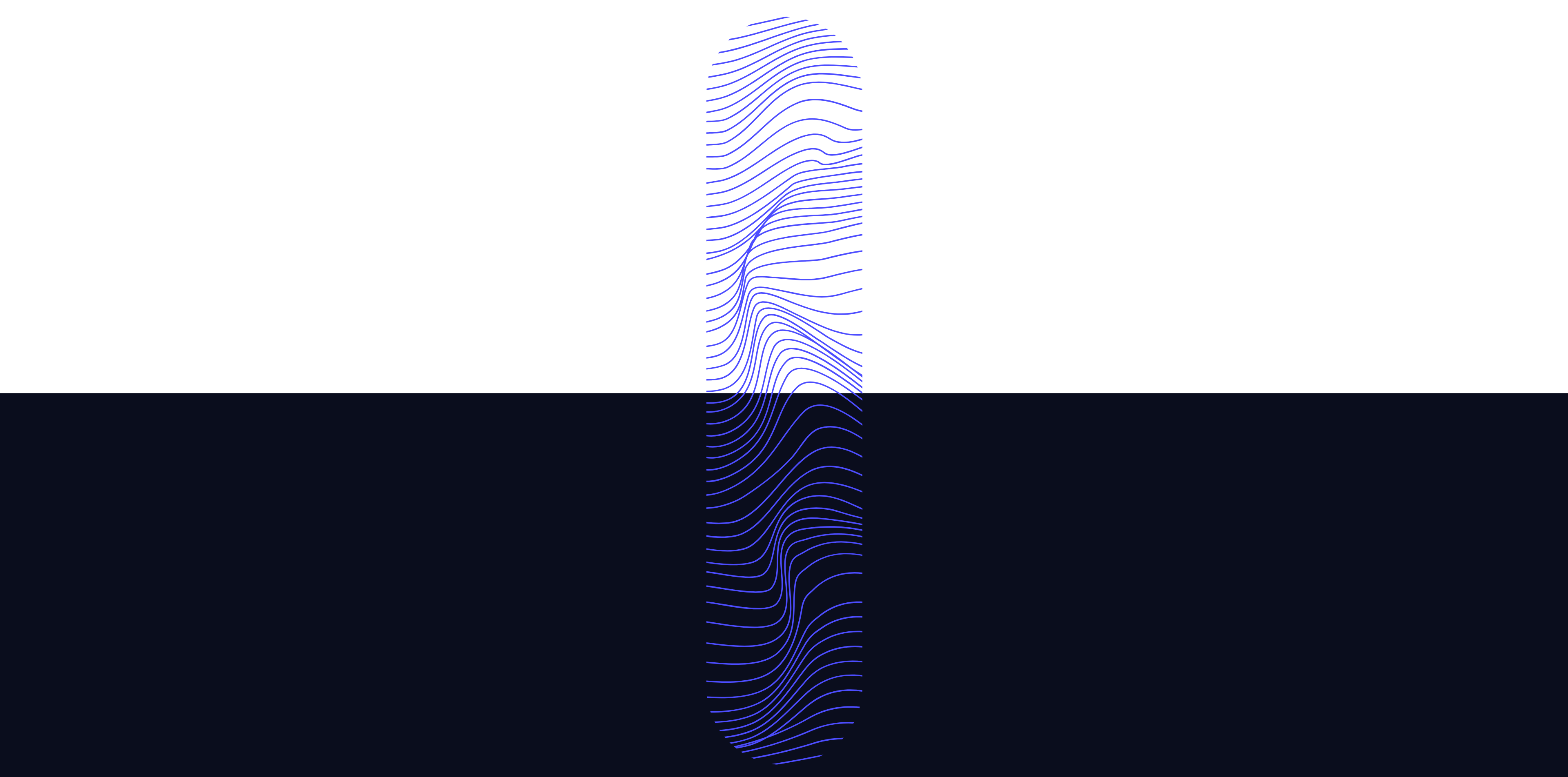
panoramic compass
The core control unit of the boat is a gigantic 70″ curved widescreen display. This is ergonomically shaped around the driver and allows complete all-round visibility.
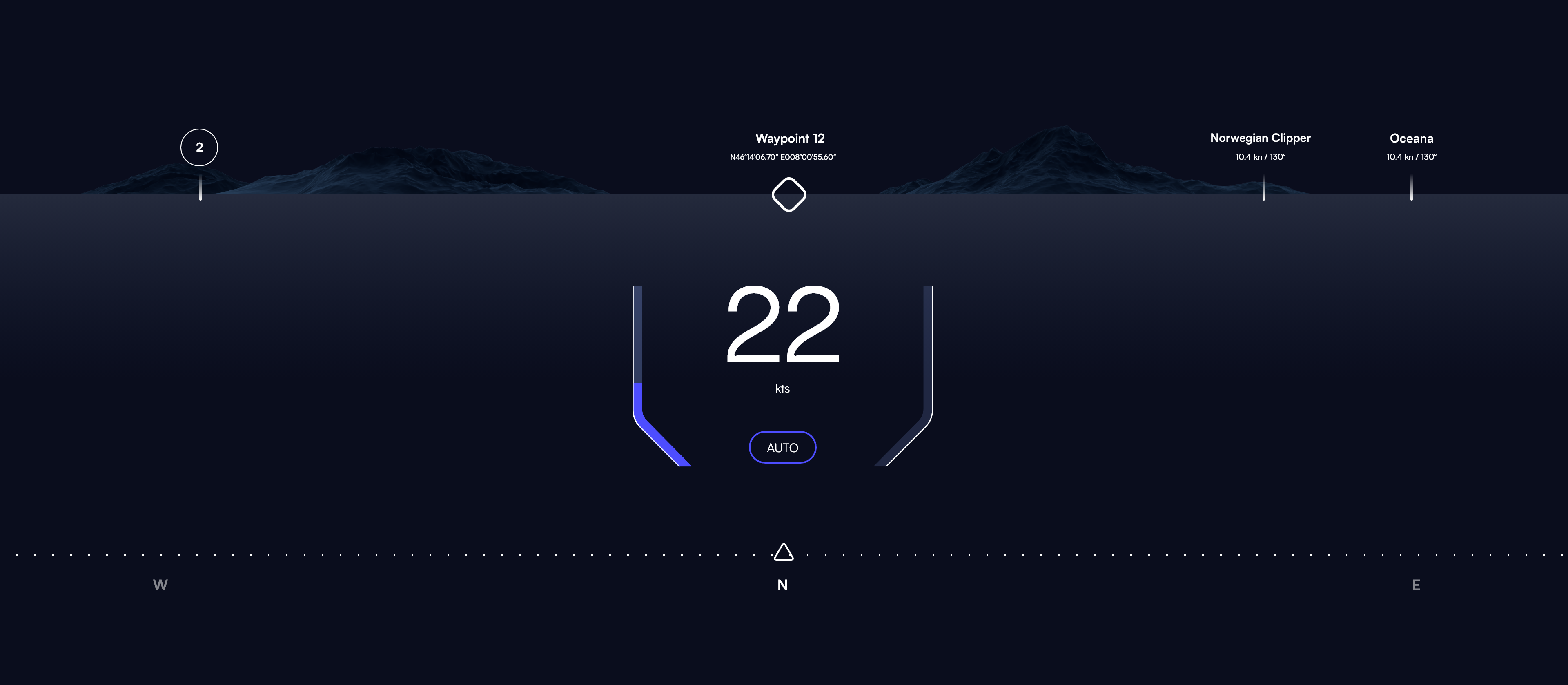
The centerpiece of the dashboard is a widescreen panorama view that simulates the surroundings. Water simulations visualize the direction of travel, wind force and speed in real time. Objects and the surroundings appear in real time as a projection on the horizont line in the form of a 180° display.
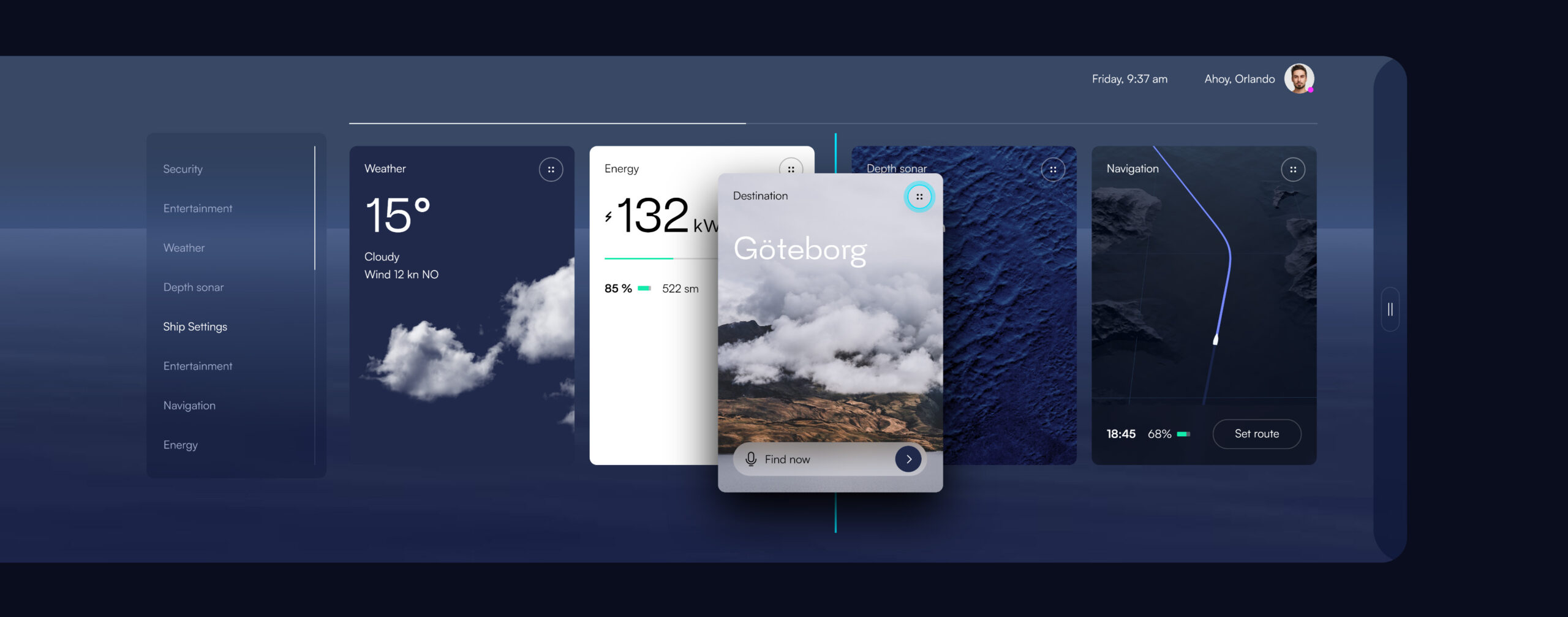
THE INTERFACE
fluid feel
Natural gestures, haptic feedback and complete freedom of customization make the interface a very flexible and equally efficient control element.
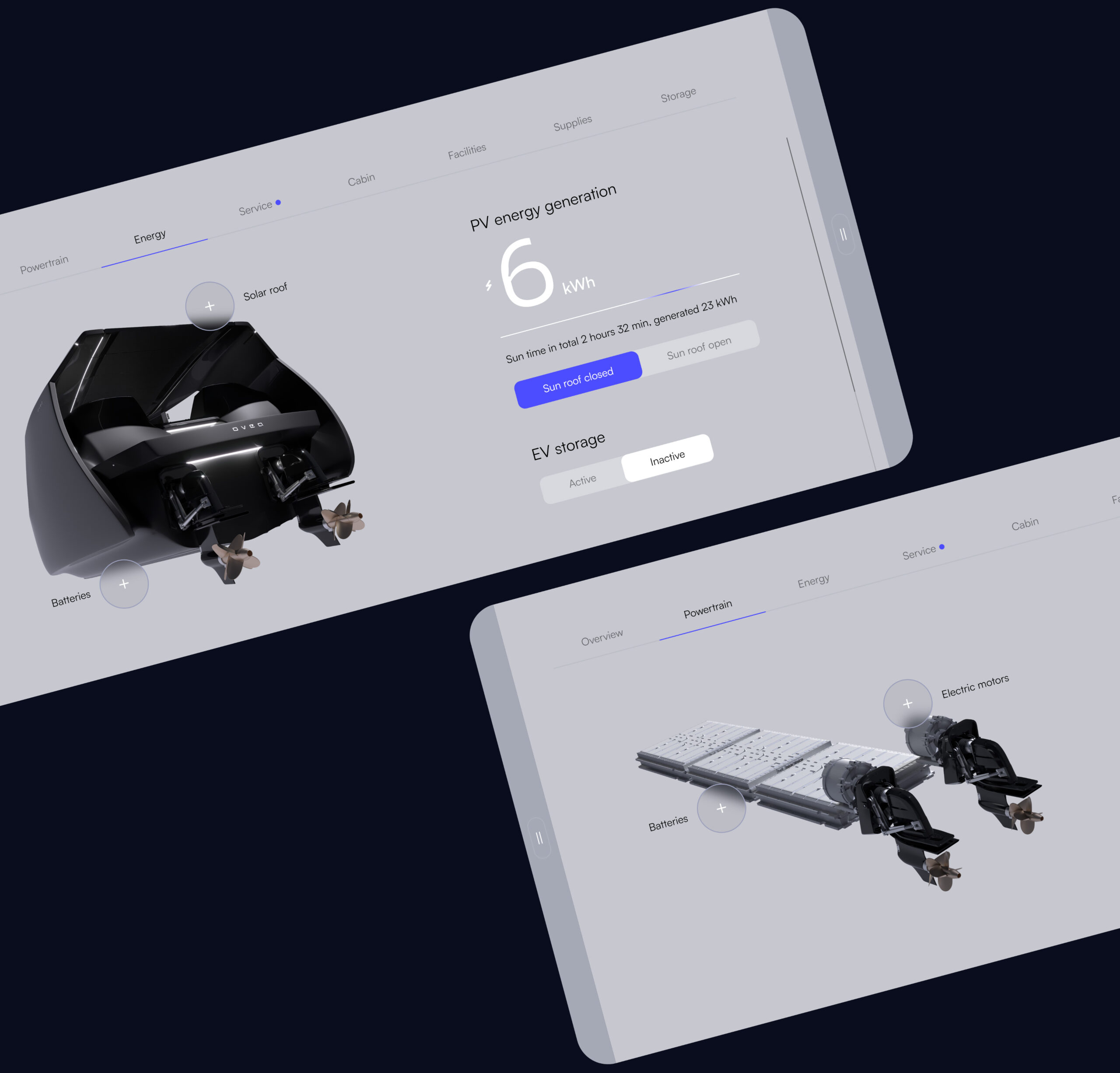
app panels
All applications exist in the form of widgets of different sizes, which can be moved freely and fixed temporarily. Interactive handling bars on both sides allow them to be moved to the passive tab zones at the edge of the screen.
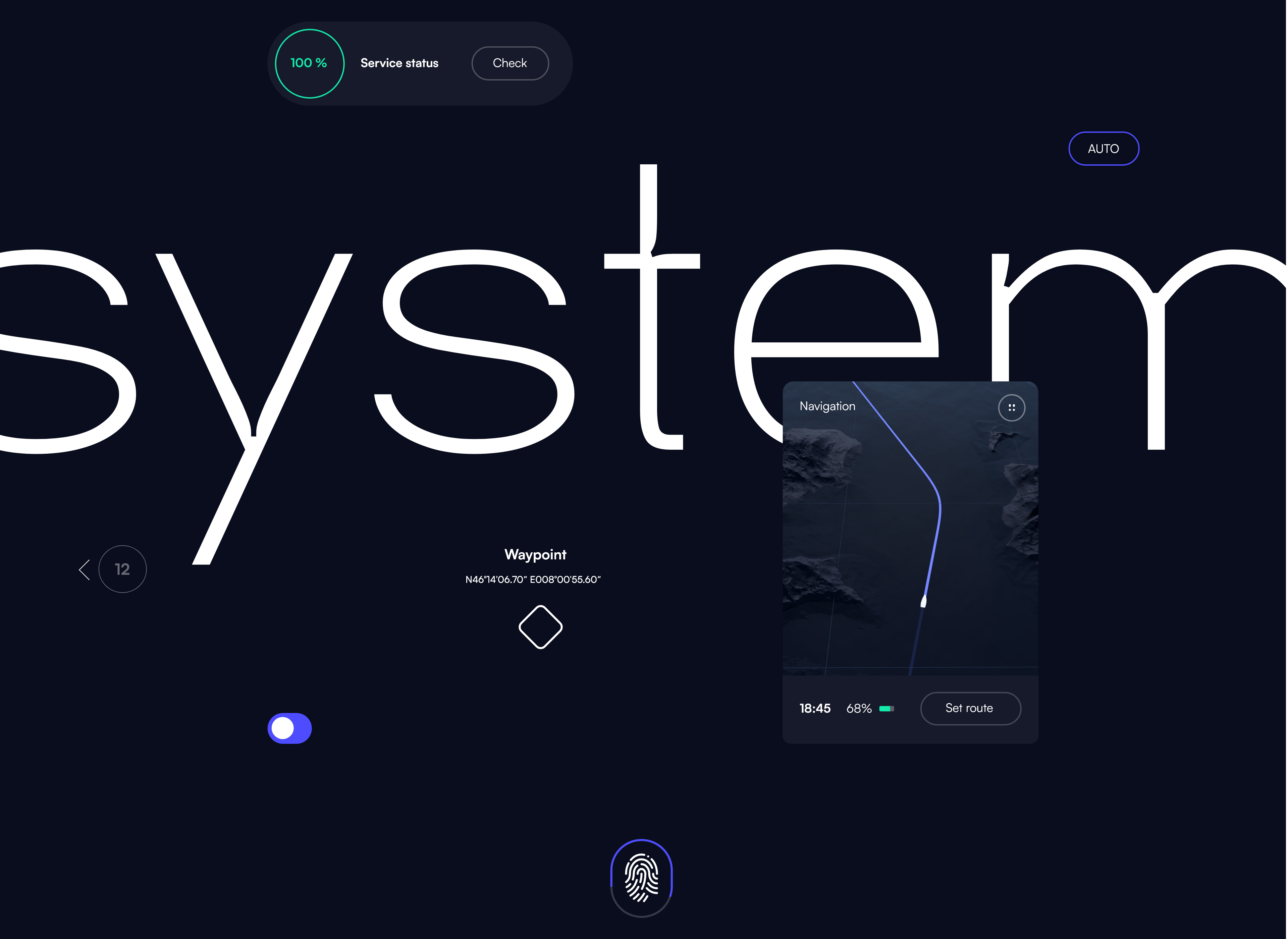

components
A component-based structure enables a highly stringent and at the same time very flexible development of the interface.
AI assist
The AI-based entertainment assistant is always accessible via a central control element. All functions can be controlled using voice commands with auto suggestions.
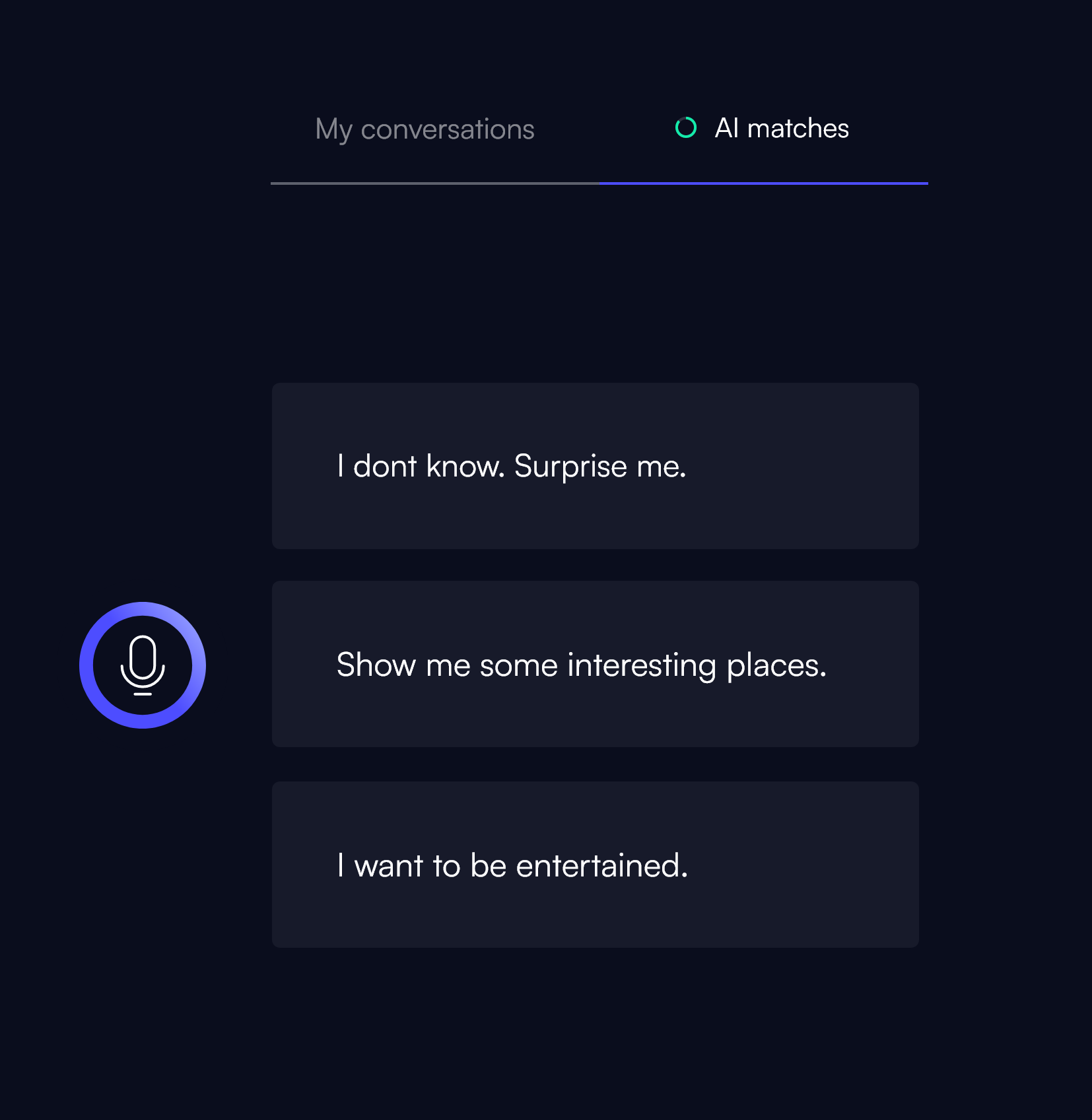
DESIGN SYSTEM
natural UI system lines
Designed for the most intuitive use possible, all control elements are characterized by a clear design language and hierarchy.
Consistency, uniformity and clarity are the top priorities for all interaction elements. These are systemically structured as multi-components and designed in line with the atomic design approach.
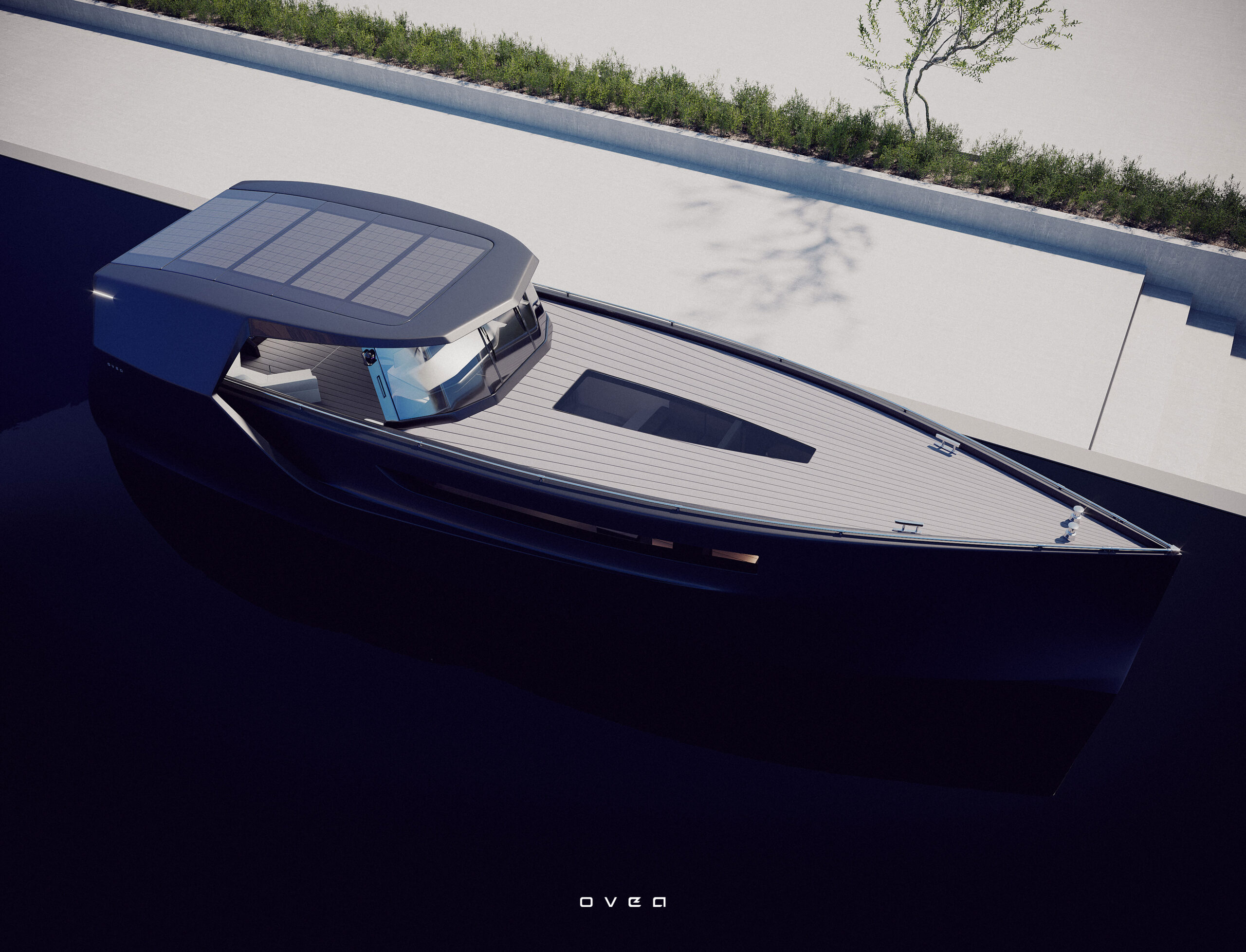
WHAT'S NEXT?
inspired?
Are you also excited about what the future will bring? Follow us for more updates and projects. Please feel free to contact me for a collaboration.
Got ideas? I'm always open for opportunities and would love to hear them — reach out in german or english, or connect on social media.
 Let's talk
Let's talk